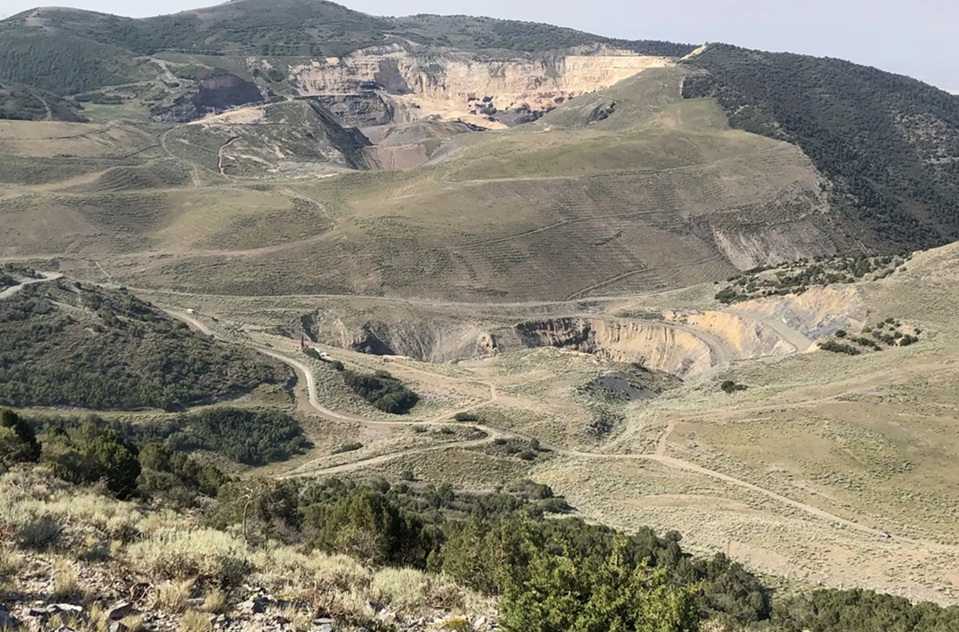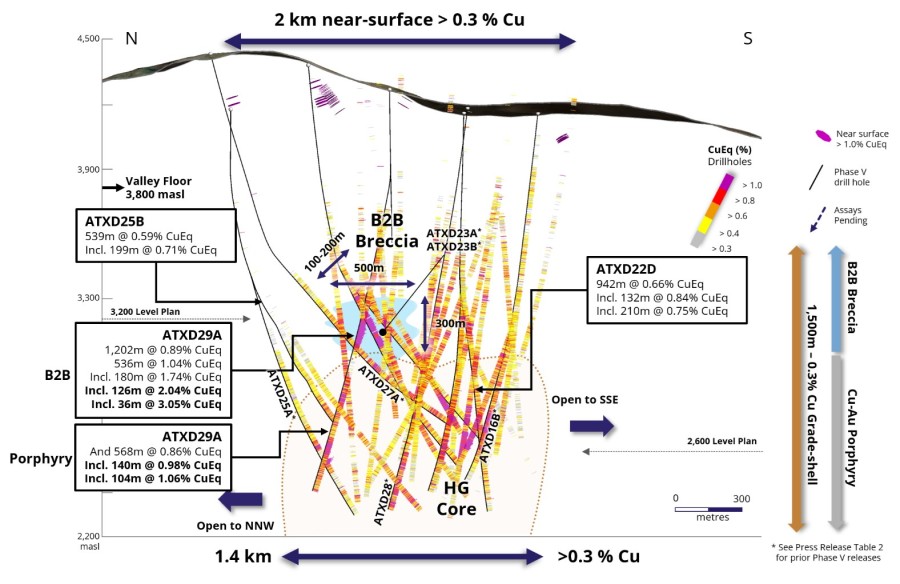VANCOUVER, British Columbia, Nov. 28, 2017 (GLOBE NEWSWIRE) -- Peregrine Diamonds Ltd. (TSX:PGD) (“Peregrine” or “the Company”) is pleased to report microdiamond results from the CH-6 kimberlite at its 100% owned Chidliak diamond project (“Chidliak”) in Nunavut, Canada. The 2017 resource expansion drill program at the CH-6 kimberlite has confirmed that the high-grade CH-6 kimberlite extends from surface to 540 metres below surface (“mbs”), an additional 280 metres below the 260-metre depth of the current CH-6 Inferred Resource announced on April 7, 2017. The CH-6 kimberlite remains open below 540 mbs, the current limit of drilling.
Caustic fusion microdiamond results released today from the 2017 drill program match well with pre-2017 microdiamond results for the KIM-L High Grade (“KIM-L.HG”, estimated at 4.16 carats per tonne (“cpt”) in the Inferred Resource) and the KIM-L Normal Grade (“KIM-L.NG”, estimated at 2.12 cpt in the Inferred Resource) kimberlite units. The 2017 diamond sample data below 260 metres have a very similar grade and size frequency distribution as the kimberlite contained in the Inferred Resource. The results of the 2017 program will form the basis of a revised CH-6 resource estimate, with the expectation of extending the categorized resource base from a depth of 260 mbs to 540 mbs.
Tom Peregoodoff, Peregrine’s President and Chief Executive Officer, commented: “The results we are releasing today confirm that the high-grade CH-6 kimberlite extends well below the current resource base of 260 metres. The microdiamond data from this years’ drilling clearly demonstrates that not only is the grade of this newly-defined extension of the CH-6 kimberlite very similar to that which we have previously defined, but also that we can expect the same macro diamond size distribution, which has important implications for future diamond valuations.
The Peregrine team is now using this information as the basis for a new resource statement due in mid-February, in which we expect to add significantly to the overall diamond content of the CH-6 kimberlite, especially given the apparent increase in the KIM-L.HG unit which has an estimated Inferred Resource grade of 4.16 cpt. In addition, the presence of a very rare green diamond bodes well for the presence of other rare, coloured diamonds that could have a significant impact on the overall average prices eventually received for diamonds recovered from the Chidliak project.”
DIAMONDS RECOVERED FROM CH-6 BY CAUSTIC FUSION
As reported on September 21, 2017, 10 core holes drilled in the 2017 summer season intersected a total of 2,450 metres of CH-6 kimberlite. Microdiamond assay results for all 10 core holes of CH-6 kimberlite are presented in Table 1, and represent all the kimberlite drilled in the 2017 season. Assay results for prior years are presented in Table 2, for comparative purposes. All assays were completed by caustic fusion at the Saskatchewan Research Council Geoanalytical Laboratories (“SRC”).
The 2017 caustic fusion results support a coarse stone size distribution for all material sampled and reproduce diamond recovery rates for the previously defined KIM-L.HG, KIM-L.NG, and KIM-C units at the CH-6 kimberlite (Tables 1 and 2). The Company reported +1.18 millimetres estimated resource grades of 4.16 cpt for KIM-L.HG and 2.12 cpt for KIM-L.NG on April 7, 2016. KIM-L.HG contains approximately double the amount of diamonds in each sieve class than occur in KIM-L.NG. The SRC recovered 213 diamonds weighing 9.32 carats in commercial diamond sizes at +0.85 millimetres from the 1,936 kilograms of sample submitted in 2017, with KIM-L.HG reporting 2.1 times higher +0.85 millimetre diamond content than KIM-L.NG (Table 1). Grade-size plots of 2017 and prior years’ caustic fusion results can be viewed here: Click Here
TABLE 1: 2017 CH-6 CAUSTIC FUSION RESULTS
| Unit* | Sample Weight (dry kg)* | Numbers of Diamonds According to Sieve Size Fraction (mm) | Total Diamonds | Carats(+0.85mm) | ||||||||||
| +0.106-0.150 | +0.150-0.212 | +0.212-0.300 | +0.300-0.425 | +0.425-0.600 | +0.60-0.85 | +0.85-1.18 | +1.18-1.70 | +1.70-2.36 | +2.36-3.35 | +3.35-4.75 | ||||
| KIM-L.HG | 867.45 | 1401 | 907 | 577 | 359 | 283 | 165 | 71 | 50 | 19 | 4 | 2 | 3838 | 5.892 |
| KIM-L.NG | 996.25 | 887 | 569 | 334 | 211 | 126 | 71 | 33 | 19 | 8 | 1 | 2 | 2261 | 3.283 |
| KIM-C | 72.75 | 54 | 40 | 25 | 14 | 6 | 1 | 2 | 1 | 1 | 0 | 0 | 144 | 0.145 |
| Totals | 1936.45 | 2342 | 1516 | 936 | 584 | 415 | 237 | 106 | 70 | 28 | 5 | 4 | 6243 | 9.32 |
* Sample aggregation by unit based on Figure 14.6 of NI 43-101 Report dated August 19, 2016.
TABLE 2: PRE-2017 CH-6 CAUSTIC FUSION RESULTS
| Unit | Sample Weight (dry kg) | Numbers of Diamonds According to Sieve Size Fraction (mm) | Total Diamonds | Carats(+0.85mm) | ||||||||||
| +0.106-0.150 | +0.150-0.212 | +0.212-0.300 | +0.300-0.425 | +0.425-0.600 | +0.60-0.85 | +0.85-1.18 | +1.18-1.70 | +1.70-2.36 | +2.36-3.35 | +3.35-4.75 | ||||
| KIM-L.HG | 1239.9 | 2685 | 1562 | 995 | 685 | 381 | 262 | 142 | 73 | 29 | 7 | 2 | 6823 | 9.441 |
| KIM-L.NG | 2813.63 | 2698 | 1750 | 1109 | 706 | 416 | 259 | 119 | 71 | 15 | 9 | 4 | 7156 | 8.740 |
| KIM-C | 309.3 | 347 | 252 | 118 | 69 | 25 | 17 | 10 | 1 | 1 | 1 | 0 | 841 | 0.439 |
| Totals | 4362.83 | 5730 | 3564 | 2222 | 1460 | 822 | 538 | 271 | 145 | 45 | 17 | 6 | 14820 | 18.62 |
Colours reported by the SRC for diamonds larger than the 0.85 millimetre sieve size are given in Table 3. The CH-6 diamonds recovered in 2017 are dominated by white and off-white colours with very minor grey or brown colours, as was the case in previous years. Yellow colours are more prominent in the 2017 batch, which also included four fragments of a unique green diamond recovered from one 8-kilogram sample. Reconstruction of the fragments produced a whole stone with dimensions of 2.4 x 1.7 x 0.8 millimetres. Green diamonds are rare, and those with saturated green body colours are exceptionally rare. Photos of the green diamond can be viewed here: Click Here
TABLE 3: COLOURS OF +0.85 MM CH-6 DIAMONDS RECOVERED BY CAUSTIC FUSION
| Colour (+0.85 mm) | Pre-2017 | 2017 |
| Stones described (n=) | 512 | 213 |
| % White/Colourless | 39 | 41 |
| % Off White | 45 | 32 |
| % Yellow | 14 | 25 |
| % Grey and Brown | 3 | <1 |
| % Green | 0 | <1 |
DISTRIBUTION OF KIM-L.HG AND OTHER UNITS
On September 21, 2017, the Company reported that two near-vertical core holes encountered typical CH-6 kimberlite to 532 mbs and 540 mbs respectively, beyond which the CH-6 pipe remains open at depth. The caustic fusion results reported in Table 1 permit fresh mapping of the distribution of the KIM-L.HG and KIM-L.NG units in core holes transecting the existing CH-6 resource (to 260 mbs), and extending to depths of 540 mbs. At depths shallower than 260 mbs, the 2017 results demonstrate that the KIM-L.HG unit extends beyond the volume represented in the existing resource model for KIM-L.HG. At depths beyond 260 mbs, KIM-L.HG is now recognized to 470 mbs and KIM-L.NG to 540 mbs, the latter representing the full depth range of kimberlite intersected to date at CH-6. The minor kimberlite unit KIM-C is recognized to 294 mbs in only one intersect drilled in 2017, and its distribution is consistent with the existing geological model for KIM-C. Currently all of unit KIM-C at CH-6 is defined as Target for Further Exploration (“TFFE”).
The Company expects that a forthcoming updated mineral resource for CH-6 will support an expanded distribution for the high-grade KIM-L.HG unit. The volume occupied by the KIM-L.NG unit will also expand, specifically at depths beyond 260 mbs. The Company expects to complete the upgraded resource calculation by mid-February 2018.
ON-SITE DENSE MEDIA SEPARATION PLANT
Planning for the construction of an on-site Dense Media Separation (“DMS”) plant has commenced. An on-site DMS plant would allow for the processing and recovery of diamonds at Chidliak, thus expediting the advancement of CH-6, CH-7, and other kimberlites to feasibility. The initial review is focusing on site selection for a 10 tonne per hour installation leading to final plant design and permitting.
Mr. Peregoodoff added: “The installation of an on-site DMS plant is the next step in our evolution towards a commercial diamond mine at Chidliak. An on-site plant will enable the Company to effectively and efficiently take the existing diamond resources at CH-6 and CH-7 through feasibility and allow us to add to this growing resource base through the bulk sampling of additional kimberlites, including CH-1, CH-44, and the 4 hectare, CH-31 kimberlite, which existing size frequency distribution data indicate have coarse diamond size distributions and could form the basis of a Phase II diamond development at Chidliak.”
More information regarding the DMS will be made available as plans progress.
QUALIFIED PERSONS
Dr. Herman Grütter, Peregrine’s Vice President, Technical Services, is a Qualified Person and is responsible for the design of the Diamond Resource Development Program at Chidliak. Mr. Alan O'Connor, Peregrine's Program Manager, Chidliak Resource Evaluation, is a Qualified Person and is responsible for the design and conduct of field programs at Chidliak. Dr. Jennifer Pell, Peregrine's Chief Geologist, is a Qualified Person and is responsible for geological characterization and microdiamond sampling of core drilled at Chidliak.
Dr. Grütter, Mr. O’Connor, and Dr. Pell have reviewed this release and approve of its contents.
ABOUT PEREGRINE DIAMONDS
Peregrine Diamonds is a TSX-listed diamond exploration and development company with assets located in northern Canada and Botswana.





